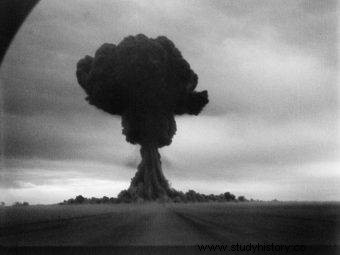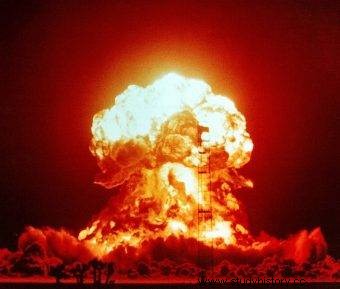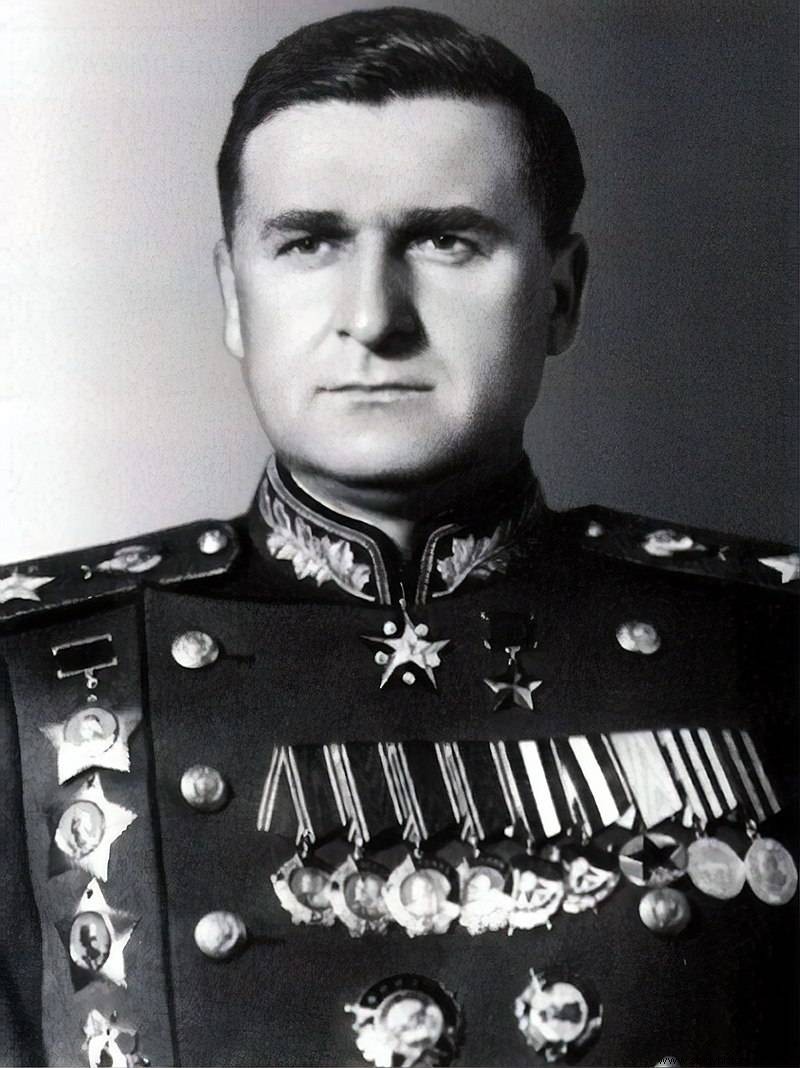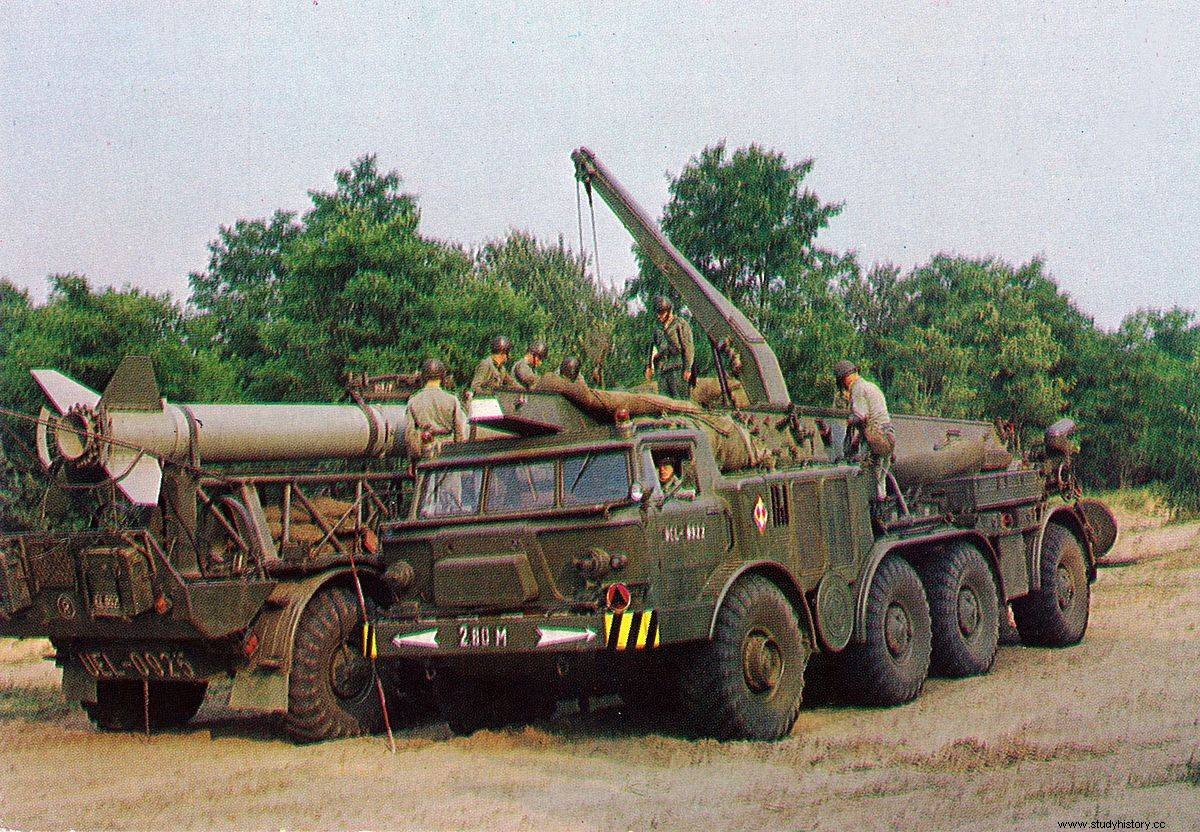For several dozen years, there were as many as 300 nuclear warheads in Poland, which were to be used in the event of a possible conflict between the Soviet bloc and the West. Polish pilots even trained to drop nukes. Only a handful of top officers knew about the depots of the lethal weapons, and the bases were under Spetsnaz's eye.
“Now I have become death. Destroyer of worlds, Arthur Oppenheimer, one of the co-creators of the atomic bomb, was to say to himself after a successful test of the new weapon. The quote from the Hindu religious text of the Bhagavad Gita turned out to be deadly accurate.
On August 6, 1945, a nuclear bomb loaded with enriched Uranium called "Little Boy" fell on Hiroshima. Within a few minutes, an atomic mushroom rose to a height of several kilometers above the city. As a result of the outbreak itself, about 30 percent of them lost their lives. city population - 70-90 thousand people. Thousands more died from radiation sickness. Three days later, a bomb called "Fat Man" knocked Nagasaki off the face of the earth. 40,000 people died.

Photo from the first attempt of a Soviet atomic bomb in 1949
At that time, the Soviet nuclear program had been in operation for several years, but the communists only managed to produce their bomb only four years after the American attacks. However, they soon achieved "championship" in this respect. In 1961, the Russians exploded the most powerful atomic bomb to date. The so-called The car bomb (hydrogen bomb) had a force of 58 megatons. For comparison:the load dropped on Hiroshima was "only" 15 kilotons.
Originally, the Car-bomb was supposed to have a power of up to 100 megatons, but in the end, thanks to the appropriate design, its strength was reduced by half. Radioactive fallout was also reduced to a minimum. The 27-volume Car-bomb was dropped on an 800 kg nylon parachute. It erupted 4,000 meters over the Arctic Ocean. Nevertheless, the fireball almost reached the Earth, some rocky islands in the ocean evaporated, the explosion was felt in Alaska, and the heat radiation from the explosion could cause third degree burns up to 100 kilometers away.
Atomic corridor
The car bomb was a show of strength. Soon, however, the Soviets gained perhaps less spectacular but equally dangerous opportunities. We are talking about a light, five-kiloton atomic bomb, codenamed 8U49. The charge - due to its lightness - was suitable for mounting in the heads of missiles fired from short-range launchers.

The car bomb was supposed to rub the nose of the Americans, who flexed their muscles while conducting further nuclear tests (in the photo, the Badger charge test in 1953).
The Polish People's Army had a lot of Soviet equipment, including the Łuna tactical and operational missiles. It was a piece of equipment with many disadvantages, most of all poor accuracy (originally the spread was as much as 3 kilometers, range - 70). Due to this another potential use of Soviet rockets was found - as a carrier for nuclear warheads.
According to the Soviet strategists preparing the Juggernaut for the final war with the West, such equipment should be found in the westernmost countries of the Eastern Bloc, i.e. in Poland. It was from here that the attack of the Red Army and the Polish People's Army, assisted by nuclear power, was to come. The missile explosions with nuclear charges and atomic bombs dropped by SU-20 fighters were to cut a specific nuclear corridor for the armored forces heading west.
The main theoretician of the "future" war was Marshal Vasily Sokołowski. In 1962, in the book "War strategy" he wrote:
In terms of means of warfare j World War III will be primarily a nuclear missile war (...). The massive use of nuclear weapons, especially thermonuclear weapons, will give war an unprecedented, destructive and destructive character. Entire countries will be crushed from the face of the earth.
Vistula program
The plan began to be implemented when the Soviet and Polish sides agreed on the "Vistula" program in the mid-1960s - the delivery and storage of nuclear loads in our area. According to the guidelines of the USSR, in 1967 Poland started building three nuclear weapons depots - near Podbork near Białogard (warehouse code name 3001), Brzeźnica-Kolonia near Jastrowie (3002) and Templewa near Trzemeszno Lubuski (3003). Each of them had 300 hectares, each one could store up to 300 loads.
After the construction of nuclear bases, the Russians laid their hand on them from the Northern Group of Soviet Forces stationed in our country. The warheads were to be made available to the Polish army only in the event of a conflict with the West.

Wasilij Sokołowski
Nuclear bases had their own power supply and air conditioning. Each had two underground Monolith bunkers, and after expansion, also Granit tunnel bunkers for storing a mobile rocket launcher. The bases were probably the best-guarded places in Poland. Each of them was guarded by 120 soldiers and 30 officers.
Your weapons and ours
It was only after the departure of the Soviet troops from Poland that it turned out that the three nuclear depots, which were created under the "Vistula" program, were not all. The Russians also had their own nuclear bunkers, which became apparent only after the penetration of the huge areas occupied by the Northern Group of Forces.
One of the bases was identified in Szprotawa in Lower Silesia. A Monolith bunker was built on a huge 700-hectare site. The nuclear power plants were also stored here in Bornem-Sulinowo, Bagicz, Chojna, Kluczewo - in the West Pomeranian Voivodeship, and Pstrąż in Lower Silesia.
How many atomic charges and what power were stored in the People's Republic of Poland? According to official data disclosed at the end of the Polish People's Republic, in our country there were 14 warheads with a capacity of 500 kT, 83 warheads with a capacity of 10 kT, two bombs with a capacity of 200 kT, 24 bombs with a capacity of 15 kT and 10 bombs with a capacity of 0, 5 kT. However, according to the CIA, this arsenal was far from complete. The Americans estimated the number of warheads in Poland as high as 300.
The atom hidden by the Vistula River could wipe out at least a few hundred Hiroshim.
Atomic Games
The problem is that these bombs would not go to Hiroshima. The arena of war would be Poland.
According to the Soviet plans in the event of a conflict, the Polish People's Army - with short-range nuclear lunas and Su planes adapted to discharge nuclear charges - was to launch an offensive in northern Germany and Denmark, cutting a "nuclear corridor" for armored forces.
At the same time, the offensive was to come from other countries of the Eastern bloc. There were nearly 1,000 nuclear warheads in the Warsaw Pact countries bordering the West . Over 500 were stored in the GDR, another 100 in Czechoslovakia. The war under the mantle of atomic mushrooms, of course, was to be a lightning war, at least in its first stage. It would later turn into an atomic blow exchange. The soldiers of the Eastern Bloc were supposed to take Germany as soon as possible, before they started… dying of radiation sickness. Therefore, the troops of the Warsaw Pact were to be in Berlin in a few days.

Łuna tactical set on the technical stand
Today we know that such a scenario would be destruction for our country. Poland was selected as the main target of NATO's response in the event of a nuclear conflict with the USSR. Nuclear bombs with a force of several hundred kilotons were to fall, among others for Warsaw, Wrocław and Kraków. Smaller loads were to explode along the border with the GDR. World War III in the "Polish" section would cost the lives of millions of people and a complete degradation of infrastructure and the environment.
Fortunately, the economic and social destruction befell the Soviet Union before the nuclear destruction of our part of the world. In 1993, the last contingent of the Northern Group of Forces of the USSR left Poland. What happened to the nuclear warheads? They had been deported by the Russians earlier - probably during the breakthrough of 1989, in the period when the foundations of the new Polish state were being formed at the Round Table. To this day, however, the Russian side has not disclosed information about when exactly and where the atom from Poland left.
